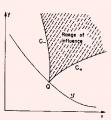
Computational Fluid Dynamics
by Hyoung Woo Oh
Publisher: InTech 2010
ISBN-13: 9789537619596
Number of pages: 428
Description:
This book is intended to serve as a reference text for advanced scientists and research engineers to solve a variety of fluid flow problems using computational fluid dynamics (CFD). Each chapter arises from a collection of research papers and discussions contributed by the practiced experts in the field of fluid mechanics. This material has encompassed a wide range of CFD applications concerning computational scheme, turbulence modeling and its simulation, multiphase flow modeling, unsteady-flow computation, and industrial applications of CFD.
Download or read it online for free here:
Download link
(32MB, PDF)
Similar books
 The Secret of Flight
The Secret of Flightby Johan Hoffman, Johan Jansson, Claes Johnson
A theory of subsonic flight based on a combination of analysis and computation. We uncover a mechanism for the generation of substantial lift at the expense of small drag of a wing, which is fundamentally different from the classical theories.
(29145 views)
 A Practical Introduction to Numerical Hydrodynamics
A Practical Introduction to Numerical Hydrodynamicsby Garrelt Mellema - Leiden University
An introduction to the field of numerical hydrodynamics. It will give you some insight in what is involved in such calculations. Numerical hydrodynamics is used in many parts of astrophysics. The applications we consider in this exercise are stellar.
(15583 views)
 Surface Waves
Surface Wavesby John V. Wehausen, Edmund V. Laitone - Springer
Since its first publication this article has been an inspirational resource for students and researchers in the various fields of science and engineering. This may be attributed to its encyclopedic scope and to the scholarly efforts of the authors.
(13444 views)
 Basics of Fluid Mechanics
Basics of Fluid Mechanicsby Genick Bar-Meir
Introductory textbook for the fluid mechanics in undergraduate classes for engineering/science students. It can be used as a reference book for people who have at least some basics knowledge of science areas such as calculus, physics, etc.
(30157 views)